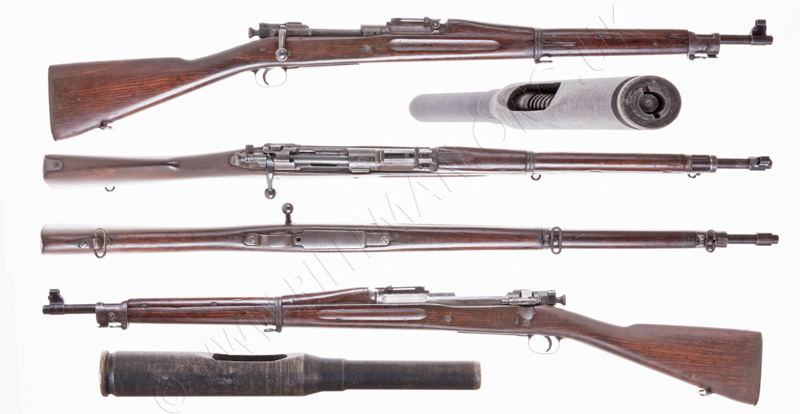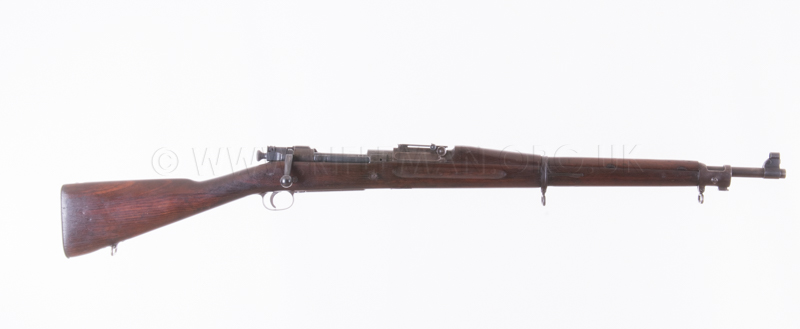AMERICAN (USA) MILITARY TRAINING RIFLES
The Hoffer-Thompson
See also: the SPRINGFIELD M2 TRAINING RIFLE
and a number of other U.S. Training Weapons with British involvement
or the complete Manual of US .22 Training Rifles
This was the Gallery Practice Rifle, caliber .22, "Hoffer-Thompson"This is a .22 sub-calibre (caliber) conversion of the .30 calibre Springfield rifle..... similar to the Parker-Hale ".303 cum .22" Pattern '18 Lee-Enfield Rifle.
Hover over or Click image to bring up hi-res file and magnifier
On August 16th. 1915, whilst the First World war was being waged in Europe, the New York times reported on an imminent training day in which the Hoffer-Thompson system for the Springfield rifle was to be used. The article provides a fascinating insight into the subject, placing it in a truly human context.
"PLATTSBURG, Aug. 15.—Mayor John Purroy Mitchel of New York and other rookies of the First 'Battalion of the Business Men's Regiment now training here will go out on the target range tomorrow morning and use the regulation army Springfields for the first time, the Second Battalion continuing its work in the field. The battalions will alternate on the range every day for the next two weeks. The men will fire at ranges up to 1,000 yards. The men who are going on the range in the morning will be called out of their tents at 4 :30 o'clock.
![]() Mayor Mitchel has received many anonymous letters in the last few days in which he was abused for leaving his desk in the City Hall and coming here to prepare himself for duty in the event of a national crisis. The letters were signed in several cases " Taxpayer " and " Citizen," but in no case was the name of the writer disclosed. The Mayor paid no attention to the communications. At retreat yesterday the members of the regiment were informed that no one would be called upon to drill or do other military work today, but those who desired to take advantage of the day for further training would not be deprived of the opportunity. About 400 of the 1,300 men here therefore appeared for instruction this morning. Some of them spent the morning at sub-calibre practice, others went on tactical walks, and still others had field instruction in artillery manoeuvres.
Mayor Mitchel has received many anonymous letters in the last few days in which he was abused for leaving his desk in the City Hall and coming here to prepare himself for duty in the event of a national crisis. The letters were signed in several cases " Taxpayer " and " Citizen," but in no case was the name of the writer disclosed. The Mayor paid no attention to the communications. At retreat yesterday the members of the regiment were informed that no one would be called upon to drill or do other military work today, but those who desired to take advantage of the day for further training would not be deprived of the opportunity. About 400 of the 1,300 men here therefore appeared for instruction this morning. Some of them spent the morning at sub-calibre practice, others went on tactical walks, and still others had field instruction in artillery manoeuvres.
Among recent discoveries made in the camp was a silver plated coffee percolator, with which the owner was brewing his special brand of coffee. The percolator later was turned into the storage tent for safe keeping, as under the regulations cooking is prohibited in the tents. The coffee maker was much perturbed and explained that he always drank a special brand of coffee, and was afraid the army brand might not agree with him. He will find out whether it does in the next ten hours. This recruit was from Philadelphia. Another recruit, a well known New Yorker, was visited by his valet yesterday. The valet brought a large assortment of linen and other garments from New York.
The women suffrage advocates have established headquarters near the camp. They have a tent and on a big bulletin board have printed a request to the men in camp to vote for the woman suffrage amendment in November.
While bathing in Lake Champlain yesterday Sergeants Wall and Stilson of the New York police force noticed that something that was not rain was falling about them. In front of them was a squad of recruits at sub-calibre practice using .22 calibre ammunition. Some of the recruits were missing the bank of earth against which the targets were posted and the bullets were playing hide and seek around the policemen. Wall and Stilson did not prolong their bath.
Fourteen new recruits were added to the regiment today, among them a number of National Guard officers from various States of the East. One of them was Captain E. M. Dillon of the Sixty- ninth New York. Others were Captain W. R. Frees of the Thirteenth Pennsylvania. Lieutenant C. O. McCauley of the First Maryland, and Captain T. A. Cowdray of New Jersey. James McKenna, Jerome Kingsbury, and Schuyler A. Orvis of the Seventh Regiment, New York, are also new recruits. One of the National Guardsmen who took part in the drill yesterday said that for hard, continuous work he had never seen the drill equalled.
Most of the 1,300 men in camp rested today. Nearly 400 of them were inoculated against typhoid yesterday and they, at least, welcomed the inactivity of the day. A gentle rain fell most of the day. Some of the men went to church, the Protestants to churches in Plattsburg, and the Catholics to the chapel of the Catholic Summer school at Cliff Haven, where mass was celebrated by Father John P. Chidwick, the chaplain
of the battleship Maine when that vessel was sunk in Havana Harbor in 1898.
A Sergeant of the Thirtieth Infantry, assigned as instructor at the sub-calibre shooting gallery, received a painful injury today when explaining the working of the rifle. In using the sub-calibre rifles the .22-calibre cartridge is first placed in a steel carrier, shaped like a cartridge, which then is loaded in the rifle like an ordinary service cartridge. In handling one of the loaded carriers the Sergeant accidentally struck the firing pin, and the cartridge was exploded. His forefinger was over the end of the carrier, and the bullet went through it."
Drag horizontally to rotate subject - Click to zoom and drag to pan
Full screen viewing from expansion arrows (Tap to Zoom)
Remainder of page still under construction.

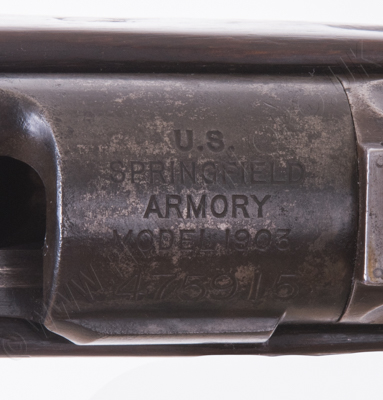
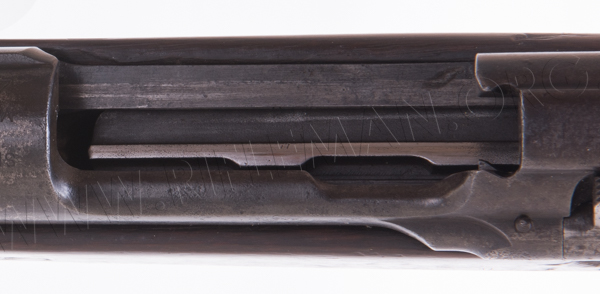
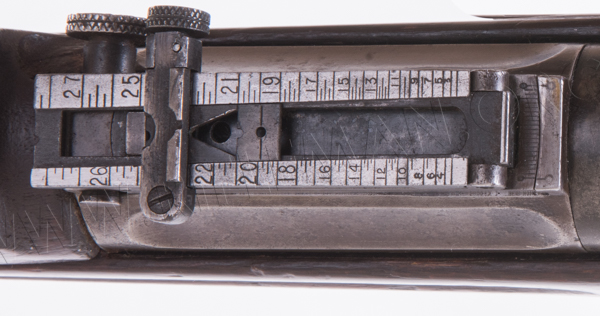
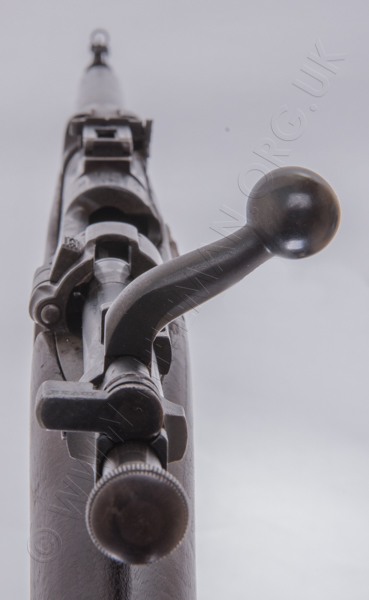

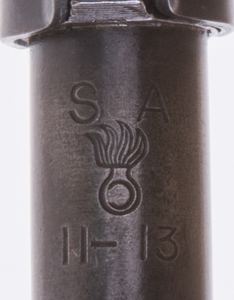
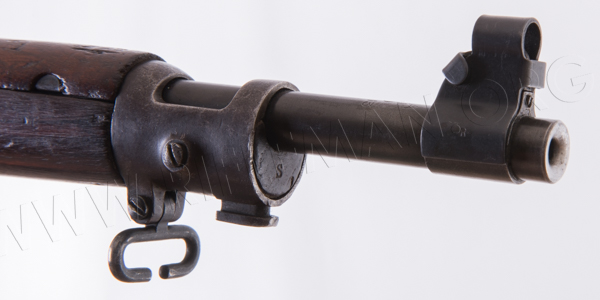
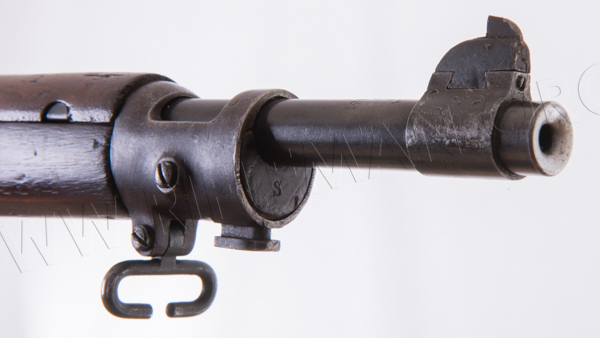
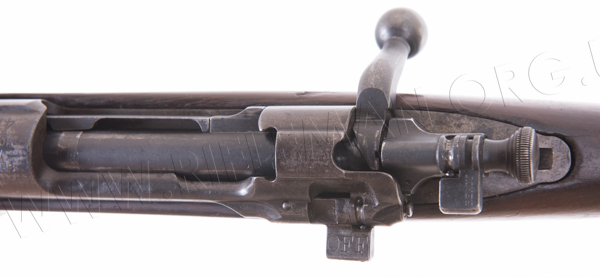
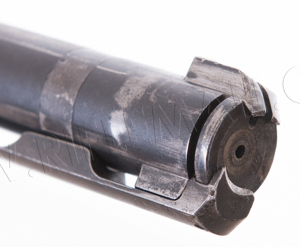
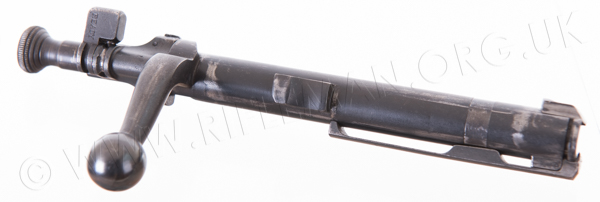
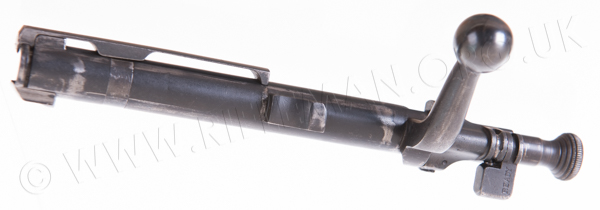
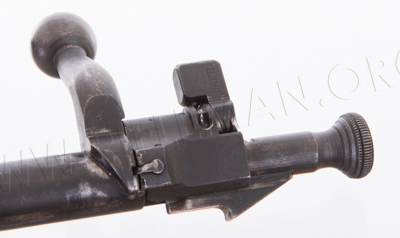





The original source of the last image and following text is unknown,
having been passed to us from an online auction some time ago.
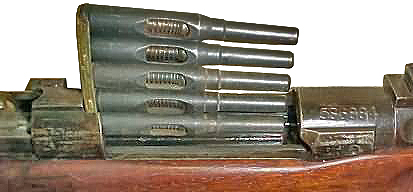
Information gleaned from a 'gun auction' write-up for a Hoffer-Thompson rifle on offer.
Rifle practice was important training for all soldiers. Weather and distance to ranges suitable for use of .30-06 ammunition made practice nearly impossible for many units. However, most had access to indoor ranges where .22 caliber rimfire rifles could be used. Besides aiming skills, an important goal was to teach use of the stripper clip for reloading the rifle, and bolt manipulation. Therefore, the Army desired a .22 caliber rifle that was as close to the Model 1903 service rifle as possible. Two Ordnance officers, Jay Hoffer and John T. Thompson (best known for his later invention, the Thompson sub machine gun, or "Tommy Gun") came up with a solution. Their version of the M1903 rifle used a .22 caliber barrel, and special steel adapters shaped like a .30-06 cartridge but holding a .22 caliber short cartridge. This design worked well enough, but by 1922 it was decided that the "stripper clip" practice was not necessary, and simpler .22 caliber training rifles were adopted. 15,525 were made circa 1907-1918, but most of the "Hoffer-Thompson" rifles were reworked with standard .30-06 barrels and returned to service rifle use.
See Firearms Safety for yet another unusual and summary lesson from times of yore.
See other North American training rifles with British involvement.
Canadian Ross Cadet Training Rifle
Winchester 1885 & Winder Muskets
Winchester 1903 Semi-auto used by the Royal Air Force
Winchester Models 63, 67 & 74 used by the U.K.
The U.S. Lend-Lease Mossberg 42M-B training rifle
The Savage NRA Model 19-33 training rifle
The Savage Model 6A semi-auto rifle
The current Savage-made British Cadet Rifle L144A1
The Springfield M2 training rifle
and the Springfield dummy "training" rifle
plus the British equivalent of the Hoffer-Thompson, the "303 cum 22" Lee-Enfield
See a Chronology of Enfield genre Training Rifles, Adapters & Cartridges
See this website's Raison d'être
